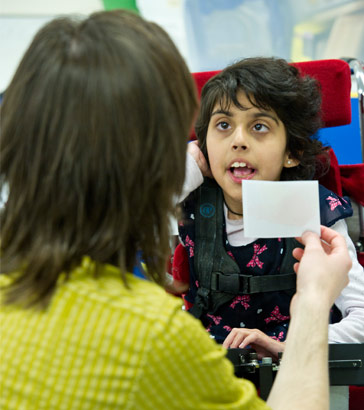and inclusion

Since 1988, the issues of first integration and then inclusion have exercised the thoughts and writings of many commentators. A very large number have felt that inclusion ought to be put at the heart of curriculum development (Byers and Rose, 1994; Evans, 1997; Sebba and Sachdev, 1997; Rose, 1998 for example). Some have felt that the whole issue of separate education (never mind separate curriculum development) was anathema.
The creation of special education as a separate system was in part a
response to the exclusion of pupils with disabilities from mainstream
schools. Thus, special education was an exclusive field of study originated
in an act of discrimination which now supports a profession.
Florian, 1998
Rather than risk continuing to confuse the special education of SLD/PMLD learners, perhaps it is time to consider the need for a discrete
national
curriculum in this sector, together with a meaningful framework of assessment,
based on what teachers in SLD schools really ought to be teaching their
pupils. The current national
curriculum remains only a relatively small part of the taught curriculum
for these learners and yet the PMLD maintains a distinct
lack of interest in evaluating the quality of teaching
and learning within the bulk of the SLD/PMLD whole curriculum.
Aird, 2009

To what extent are the principles and values that underpin good practice in special education applicable to all curriculum design and
classroom practice?
The personalisation agenda has changed the terms of
reference for curriculum planning. Whereas inclusion could be conceptualised as making special provision for learners with special needs, personalisation is relevant for all learners because it challenges schools to develop learning pathways centred on the needs, aptitudes, interests, learning styles and aspirations of all learners.
Read the following articles to give you background
on this subject.
in your school?
Where can you find evidence that this is happening effectively?
As local educational partnerships develop, how can special educators share their expertise with mainstream colleagues and schools?

Aird, R. (2009) A commentary on the National Strategies DCSF Special Education
Needs/Learning Difficulties and Disabilities (SEN/LDD) Progression Guidance
Project 2008-09. The SLD Experience. Issue 53.
Byers, R. and Rose, R. (1994) Schools Should Decide......
in Rose, R. Fergusson,
A. Coles, C. Byers, R. and Banes, D. (eds) Implementing the Whole Curriculum
for Pupils with Learning Difficulties. London. David Fulton.
Evan, P. (1997) Structuring the curriculum for pupils with learning difficulties
in Pijl, S J. Meijer, C J W. and Hegarty, S. Inclusive Education: a Global Agenda.
London. Routledge.
Florian, L. (1998) Inclusive practice : what, why and how? in Tilstone, C.
Florian, L. and Rose, R. (eds) Promoting Inclusive Practice. London. Routledge.

Rose, R. (1998) The curriculum. A vehicle for inclusion or a lever for exclusion?
in Tilstone, C. Florian, L. and Rose, R. (eds) Promoting Inclusive Practice.
London. Routledge.
Sebba, J. and Clarke, J. (1991) Meeting the Needs of Pupils within History and
Geography in Ashdown, R. Carpenter, B. and Bovair, K. (eds) The Curriculum Challenge.
London. Falmer Press.
Sebba, J. and Sachdev, D. (1997) What Works in Inclusive Education? Ilford.
Barnardos.